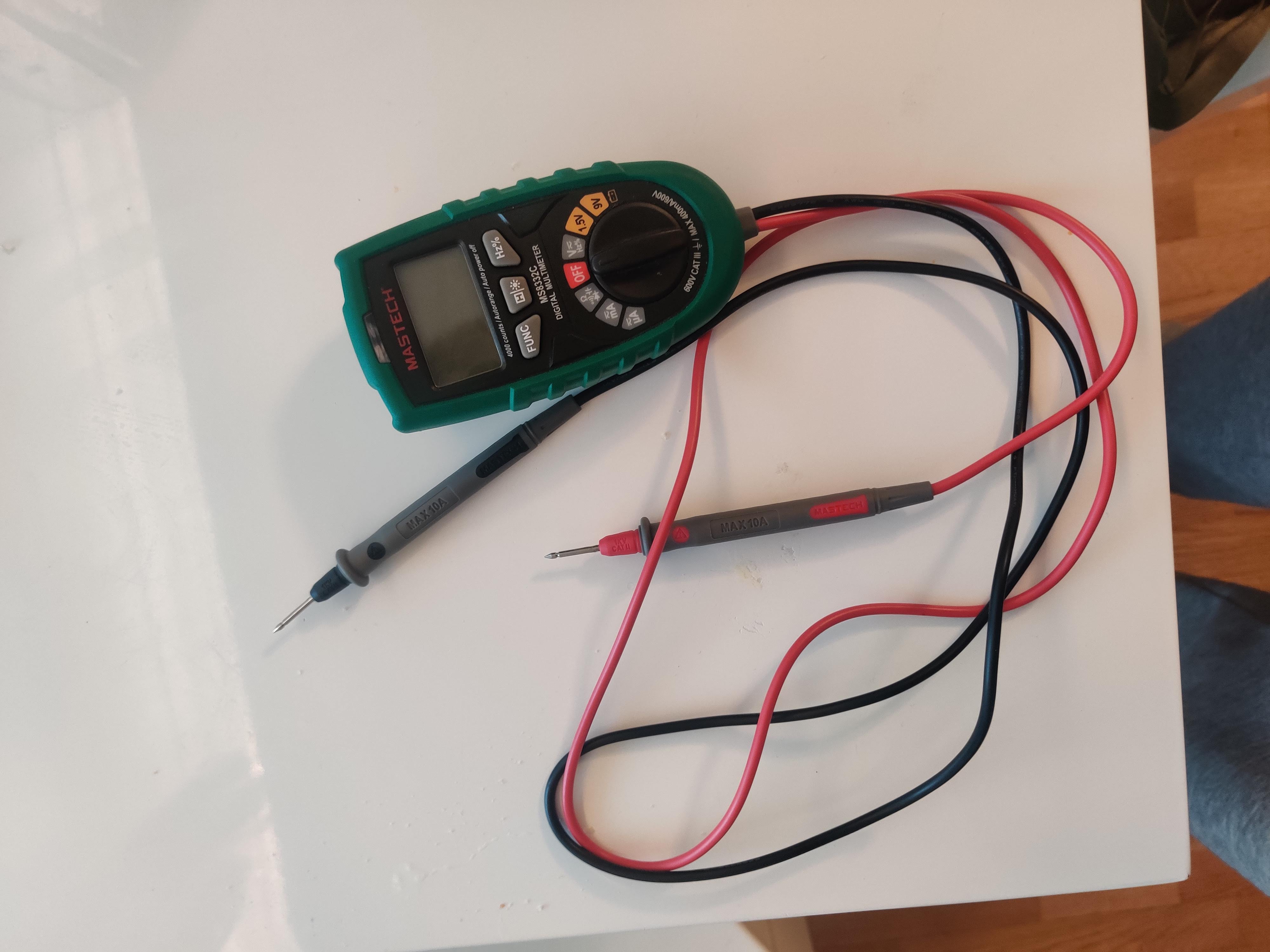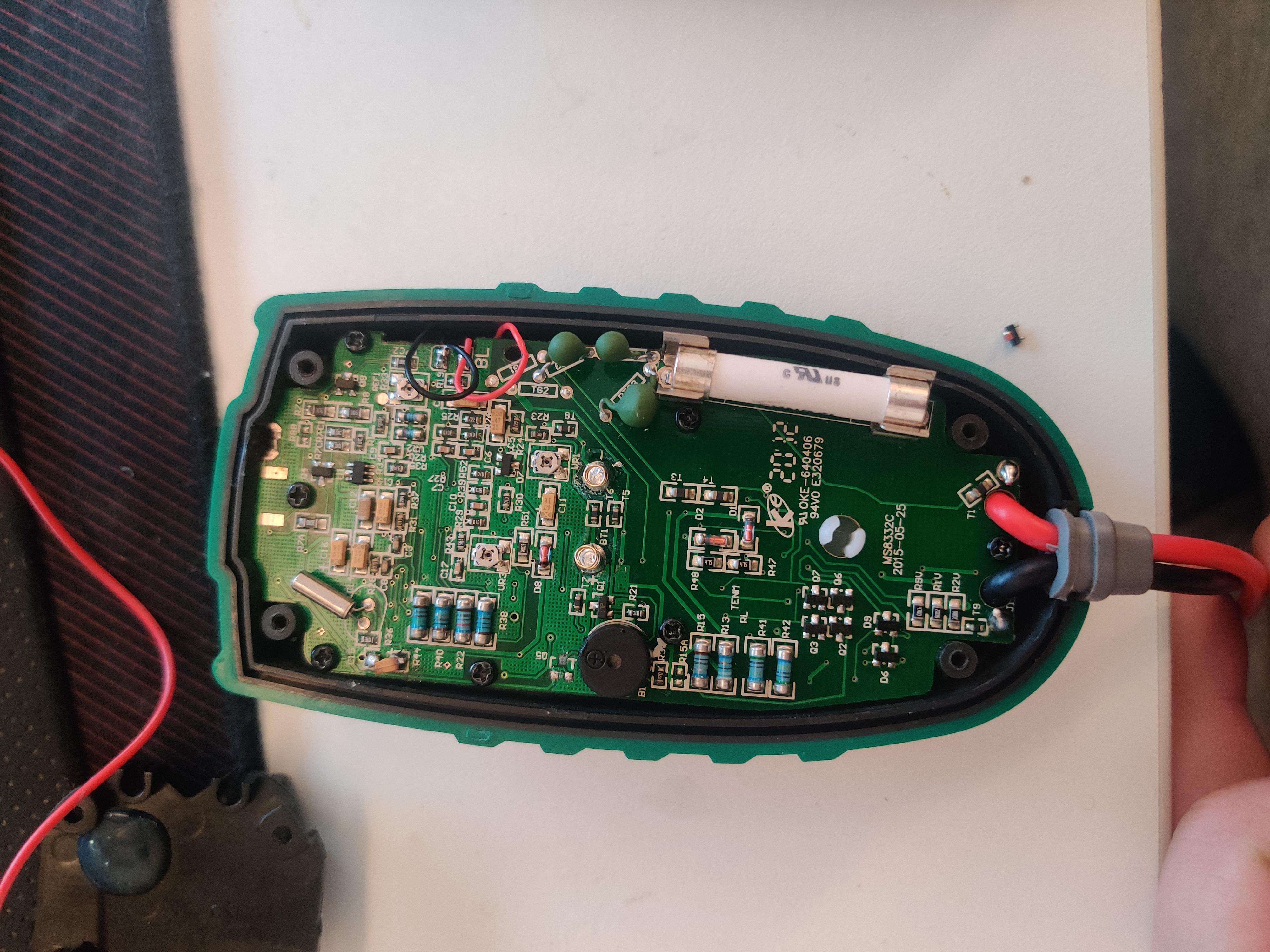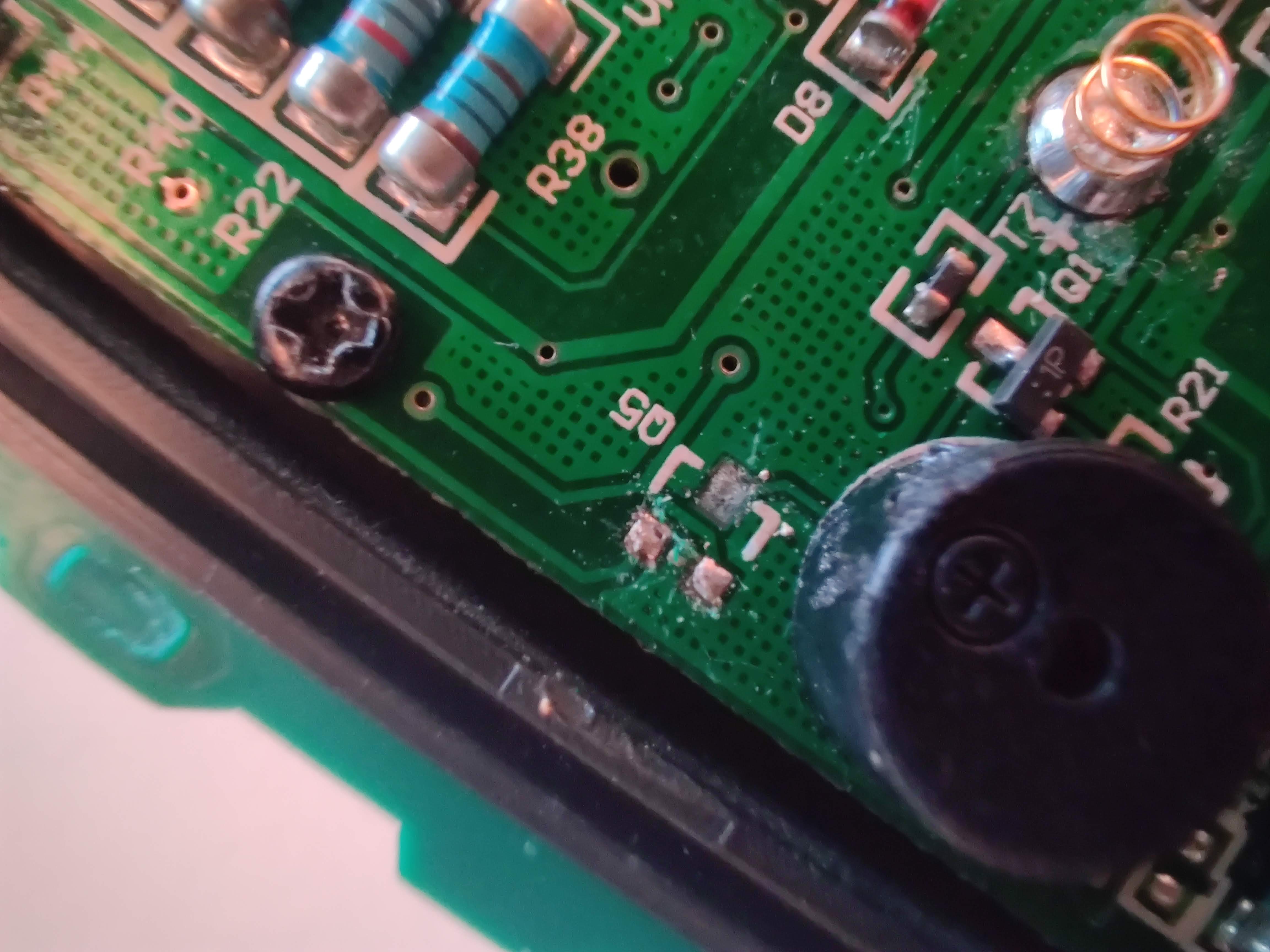Mastech ms8332c Multimeter NCV fix¶
This site is not really intended for tutorials, but for this topic I’ll make an exception, as AFAIK there isn’t a fix available on the internet right now. Hopefully this article helps someone, or at least serves as a warning on how NOT to design a multimeter.
The problem¶
I own a multimeter for home defense, since that’s what the founding fathers intended.

The make and model is Mastech ms8332c. The main selling point is probably that it’s cheap, but it has some nice additional features, such as autoranging, a backlight and capacitance measurement.
On first glance thus, this appears to be a fairly basic, but usable multimeter. But there is a huge problem. Ironically the problem is also a “feature”.
This particular multimeter is equipped with non contact voltage detection, or NCV for short. NCV uses a capacitor and the users own body capacitance to remotely detect AC current, useful for determining if a mains wire is live for instance. The principle is explained in This article. Many Multimeters come with NCV, and it’s usually just a nice extra feature. But not in this case.
On most multimeters, the NCV feature is turned on by moving the know to a special position, but not on this one, instead NCV is always active when powered on. This might not sound so bad, but recall that NCV uses body capacitance to function. Thus, if the used is not holding the multimeter (such as in the rare cases one needs both hands to use the multimeter probes), the circuitry will become much more sensitive, contantly getting triggered by random electric noise. Even worse, probing anything powered (as one tends to do with a multimeter) also causes the NCV alert to go off. The alert consists of a blinking light and beeping, making usage of the multimeter extremely annoying.
I don’t user the multimeter very much, so I have lived with the beeping for a long time. But enough is enough. Time to delete this “feature” once and for all.
Inside the multimeter¶

The Multimeter opens up quite easily, by removing the battery lid and four Phillips screws in the corners.
Looking inside, I first noticed what looks like a loop antenna on the upper part of the PCB. Figuring this was the NCV pickup, I figured I could grind it away with a Dremel to stop the noise.. This unfortunately did not work and the beeping still continues.
There is a suspicious cylindrical THT component on the upper part of the PCB, but this appears to be a crystal oscillator, based on the “Y” marking. It is possibly used in the NCV circuit, but could also be for the main IC, so i don’t want to risk removing it yet. Many multimeter functions probably need a timing signal.
My second idea was to remove the NCV LED, hoping that it and the buzzer are in series. Unfortunately, the beeping didn’t stop despite the LED removal. I would thus have to figure out which components are part of the NCV circuit. Unfortunately, the buzzer is shared between NCV and the continuity tester, so removing it would disable the continuity beep as well, which is not ideal.
Solution¶
Taking a closer look at the PCB, there are two 3 pin SMD packages, likely transistors, close to the buzzer. One of these, “Q5”, has a trace going to the top of the PCB going up to the antenna. Could this be an amplifier in order for the NCV signal to drive the buzzer? Only one way to find out..

Success! NCV is permanently silenced by removing the Q5 transistor. ALl other features, including continuity beeping still works, making the multimeter much more usable.